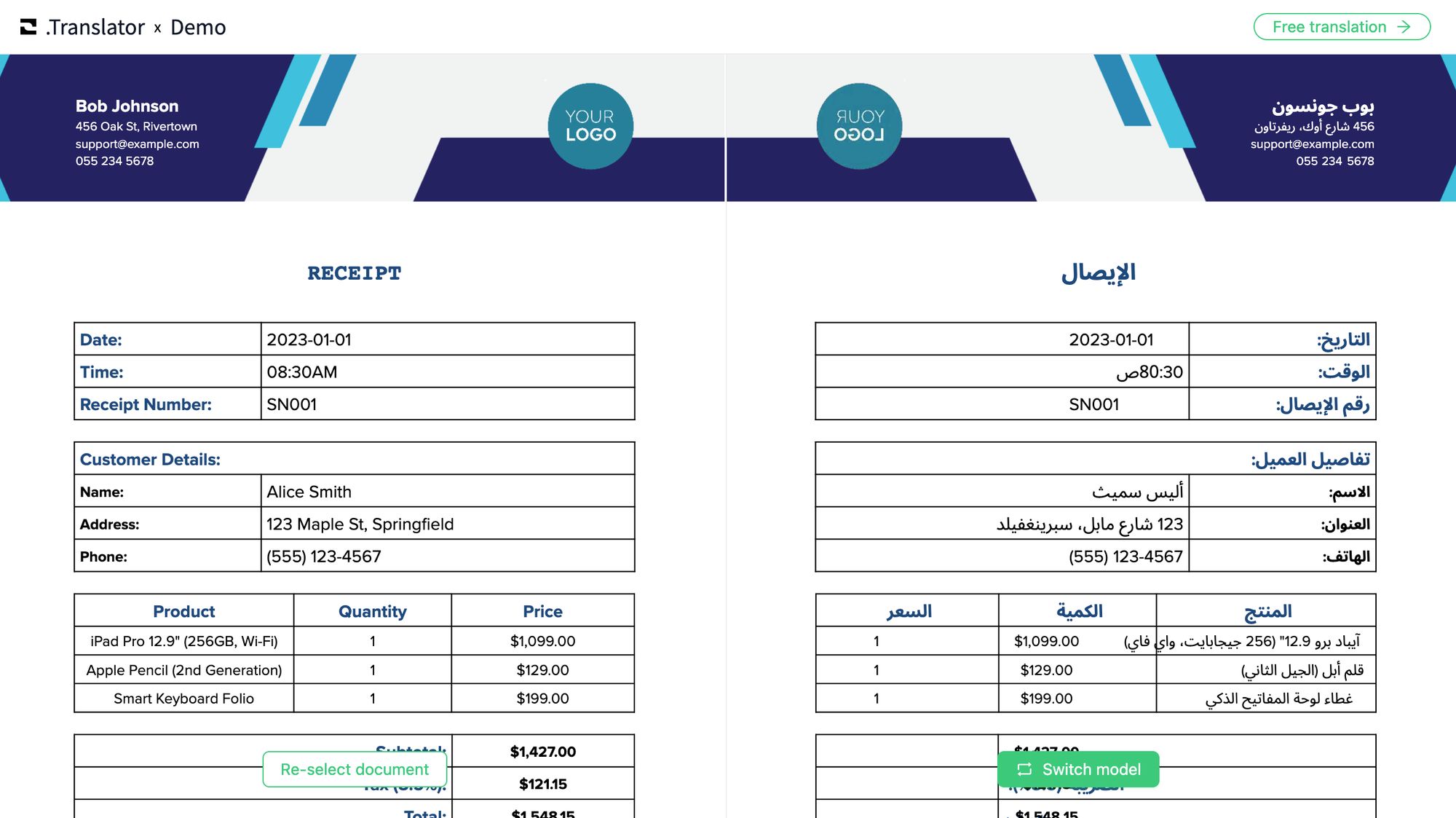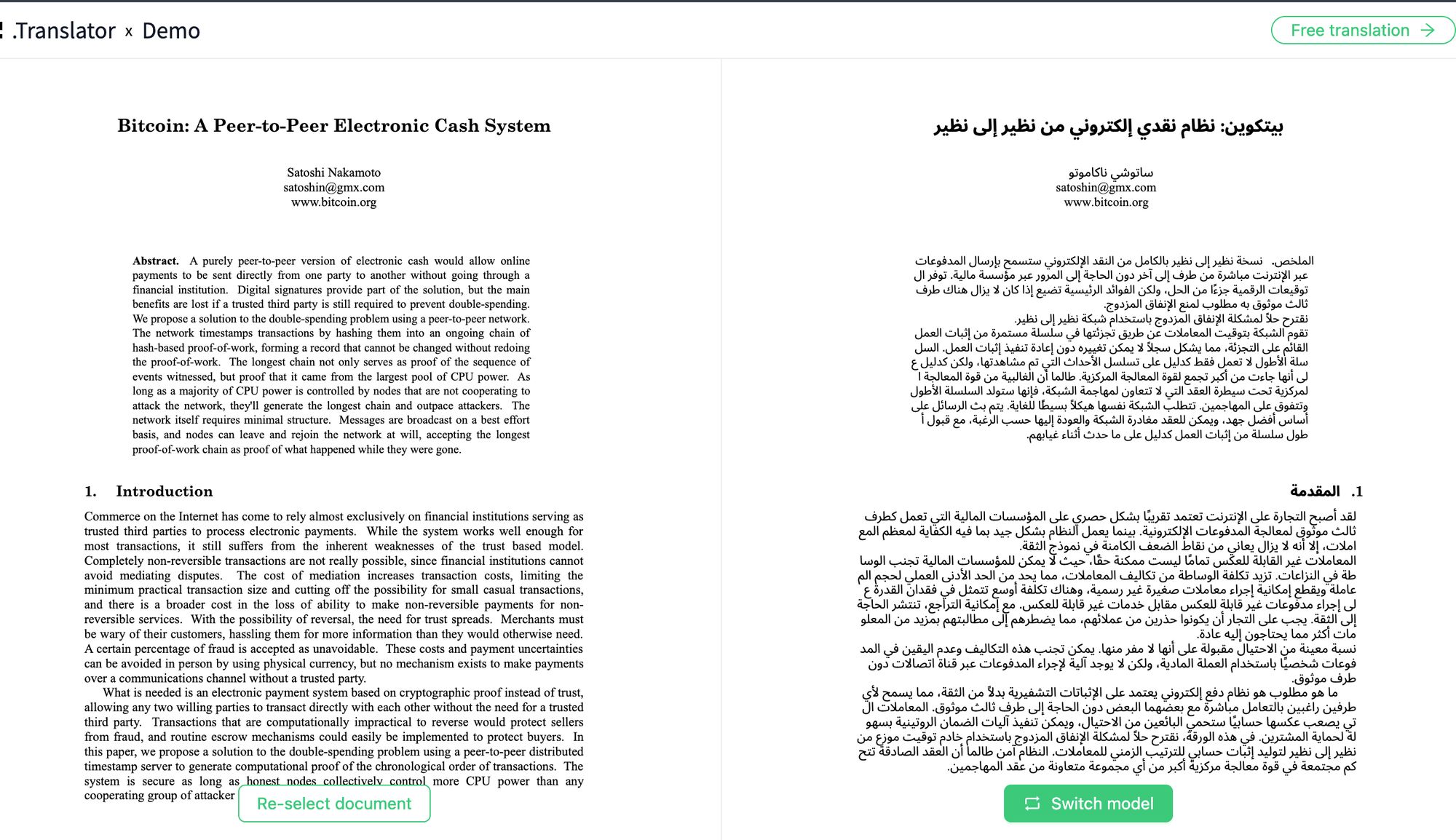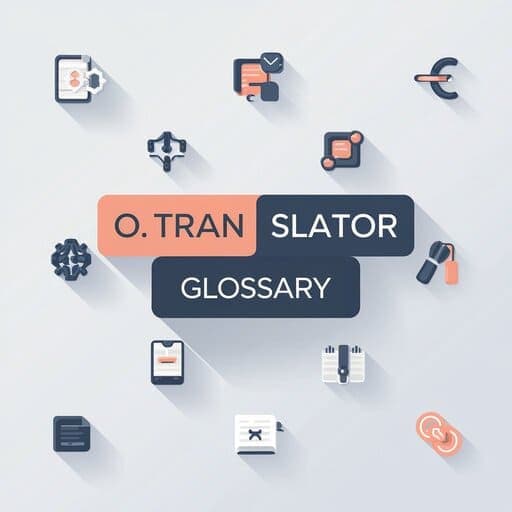BIDI Decoded: The Key to Perfect Arabic Translation
Yee
Nov 08, 2024

Mastering Arabic Translation: Why is the BIDI Algorithm Key?
Have you ever been driven crazy by formatting Arabic or Hebrew text? Especially when English, numbers, and Arabic are all mixed together—the entire layout instantly collapses, and just trying to read it is a struggle. I completely understand that feeling.
Behind this is a technical challenge that has frustrated countless developers and translators: how can we make right-to-left (RTL) and left-to-right (LTR) text coexist harmoniously?
Don't worry, you're not fighting this battle alone. The ultimate answer to this problem is the main character of our discussion today—the BIDI algorithm (Bidirectional Text Algorithm). It's like an experienced 'traffic controller' for text, quietly resolving layout chaos behind the scenes. It's thanks to the BIDI algorithm that modern translation tools like O.Translator can handle Arabic documents so effortlessly.
Ready? Let's unveil the mysteries of the BIDI algorithm together and see how it has completely transformed the Arabic translation game.
The BIDI Algorithm: Making Right-to-Left Text No Longer a 'Jumbled Mess'
Put simply, the BIDI algorithm is an international standard with a single mission: to ensure that RTL languages (like Arabic and Hebrew), when mixed with LTR text (such as English or numbers), are displayed and processed correctly by computers. This isn't some obscure, high-tech secret—it's a core standard that underpins our global digital lives and is formally recognized in the authoritative Unicode Standard.
How does BIDI work? Think of it as a smart traffic controller
Imagine a two-way street: some cars drive from the left, some from the right, and there are also neutral 'pedestrians' (like spaces and punctuation marks) that need to decide which side to walk on based on the flow of traffic. The BIDI algorithm acts as the intelligent traffic controller for this road.
How does it achieve this? The answer lies in recognizing the 'directional property' that each character inherently carries:
- Strong characters with clear direction: These characters naturally have their own direction. For example, English letters like
A,B, andCalways go from left to right, while Arabic letters such asأ,و, andلconsistently go from right to left. - Wavering 'weak' characters: Numbers are a classic example. Their direction depends on who their 'neighbors' are. For example, in the combination
123 أول, the number123obediently follows the Arabic text to its right, and is ultimately displayed asأول 123. - Go-with-the-flow 'neutral' characters: Characters like spaces, commas, and exclamation marks observe where the 'main group' of the sentence is heading and simply follow along. In the sentence
Hello, أول!, since it starts with English, the punctuation naturally follows the left-to-right order.
Thanks to this watertight set of intelligent rules, the BIDI algorithm ensures that no matter how mixed the text is, what you ultimately see is a perfectly logical and easy-to-read sequence.
Why is BIDI the 'unsung hero' of Arabic translation?
The theory might sound a bit dry, but in practice, BIDI plays an absolutely crucial role—especially in those complex translation scenarios where not a single character can be wrong.
Scenario One: The 'lifesaver' for technical and legal documents
Imagine you're translating an Arabic legal contract or technical manual that's packed with English terms, product model numbers, and precise figures. If a decimal point or a number is misplaced, the consequences could be unimaginable. Here, the BIDI algorithm is like a meticulous proofreader, ensuring every character appears exactly where it should. This goes beyond simple text conversion—it's true professional RTL language localization. If you want your PDF document translations to maintain a professional standard, the BIDI algorithm is absolutely essential.
Scenario Two: Creating a Seamless Multimedia Experience
Have you ever wondered why Arabic subtitles on Netflix sync perfectly with the video, even when the dialogue includes English? That's right—it's all thanks to the BIDI algorithm. It ensures that subtitles switch smoothly and naturally between different languages, without any jumping or misalignment. This same magic is also applied to app interfaces and web design, allowing Arabic users to enjoy a seamless experience indistinguishable from other language versions.
Scenario Three: Empowering AI Translation Tools
Translation tools like O.Translator, which integrate multiple leading AI models, have truly unlocked the full potential of the BIDI algorithm. With deep learning, O.Translator not only understands the semantics of the text, but can also anticipate the complex directionality of the content. It can dynamically adjust translation strategies, automatically selecting the optimal text arrangement rather than simply making rigid substitutions. This intelligent processing not only greatly enhances translation accuracy, but also enables both professional translators and everyday users to easily achieve high-quality translation results. Want to learn more about the secrets of how different AI models work together? Take a look at this in-depth analysis on multi-model post-editing.
How does O.Translator harness the power of BIDI to effortlessly translate Arabic documents?
After all this theory, you might be asking: in practice, how can I take advantage of this technology? The answer is simple—leave specialized tasks to specialized tools.
One click does it all—what you see is what you get.
With O.Translator, you never have to worry about how the complex BIDI algorithm works behind the scenes. All you need to do is upload your document—whether it's Word, Excel, or PDF—and the system will automatically take care of all bidirectional text formatting issues. What you see is what you get.
Want an intuitive overview of the workflow? You can watch this brief tutorial video: Document Translation Tutorial Video
See it for yourself: Experience seamless formatting firsthand.
Instead of just taking our word for it, why not see for yourself?We've prepared a variety of translation examples so you can see firsthand that whether you're translating Arabic to Chinese or English to Arabic, O.Translator flawlessly preserves the original document's layout and formatting.
Jump into our demo environment and try it out for yourself!
View more Arabic translation examples




